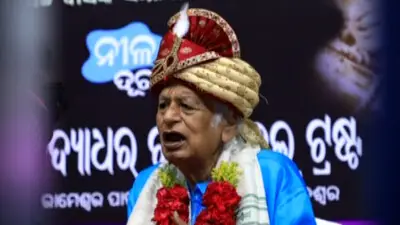Recommended Stories
By Ashutosh Mishra
Bhubaneswar: Any bid to reform the education system in the state is usually met with protests either from students or from the teachers. Teachers in the past have agitated against attempts to impose a dress code and to ensure their attendance in schools and colleges. Initially, efforts to stop college teachers from engaging in private tuitions had also evoked protests.
Cleansing and strengthening of the examination system is an integral part of education reforms. Here, too, any new idea is challenged immediately by teachers and students. In a bizarre case in western Odisha, the students of a college had not only insisted on taking exams in their own college but also resorted to violence when stopped from copying. Unfortunately, even parents have been supportive of their wayward wards in many cases.
The latest example of a reform bid triggering protests is the brouhaha over the mass education department’s decision to make securing 33 per cent marks in Plus II first-year compulsory for students to be promoted to the final year. Students across the state are on a warpath, boycotting classes, blocking roads and burning tyres.
The argument of the students is that the decision has been taken in a hurry with very little time left for them to prepare for the exams. In certain colleges, teachers are yet to complete the course. Hence, students find this decision of the government arbitrary and would like it to be implemented from the next year, if at all.
I find this argument rather strange. If a student attends classes regularly and also studies at home securing 33 per cent marks for him or her should be child’s play. As for courses not having been completed, I am pretty sure that teachers who set the questions will take this fact into account and design question papers accordingly.
Instead of protesting students should welcome the decision of the government to make securing 33 per cent marks compulsory in the first year in order to become eligible to appear for the final year examination. This is a great opportunity for them to test themselves and to prepare themselves properly for a crucial examination of their academic career.
The fact of the matter is that protests have become fashionable in the academic world. There are dharnas and demonstrations at the slightest provocation. But being part of the intelligentsia both students and teachers are setting a bad example by resorting to frequent protests.
The phenomenon is common to colleges and universities across the country. Sometimes the protests are so irrational that it is hard to believe that supposedly well-read and enlightened people can behave in this manner. One could not resist feeling disgusted when the students of faculty of Sanskrit Vidya Dham Vigyan (SVDV) at the Banaras Hindu University sat on a dharna against the appointment of a Muslim teacher. The agitation was called off only after the teacher was shifted to the department of Sanskrit in the faculty of arts.
Both students and teachers must curb this tendency to resort to protests on any issue as it is increasingly beginning to look like blackmailing tactics. They should remember than educational institutions are meant to generate light and not self-consuming heat.
(DISCLAIMER: This is an opinion piece. The views expressed are the author’s own and have nothing to do with OTV’s charter or views. OTV does not assume any responsibility or liability for the same)













